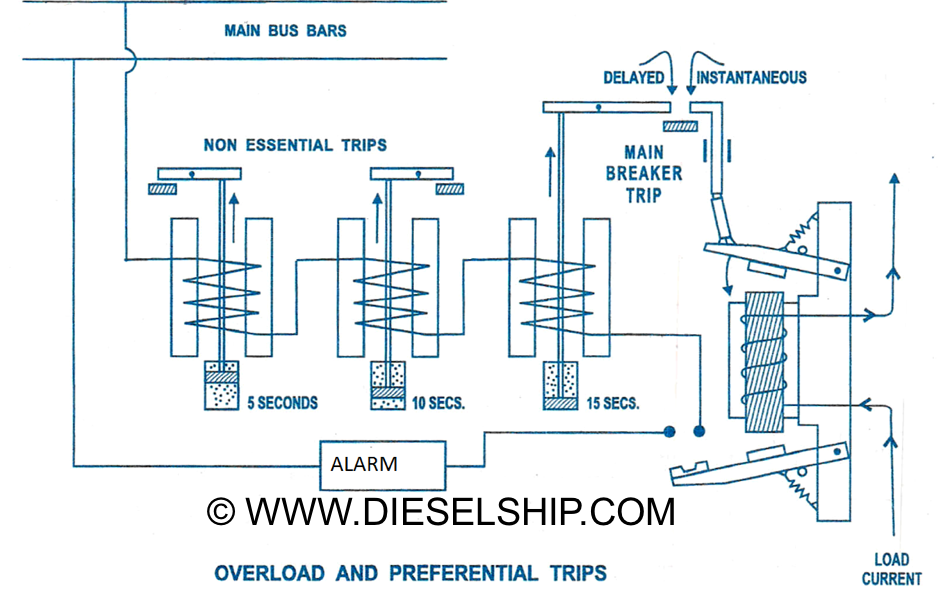Preferential tripping in a marine electrical distribution system

Preferential tripping in a marine electrical distribution system
Preferential tripping in a marine electrical distribution system are designed to disconnect non-essential circuits (e.g. breakers controlling air conditioning, galley power, blowers, refrigeration etc.) in the event of partial overload or partial failure of the supply, with the aim of preventing operation of the main breaker trip and loss of power on essential services.
- A method for operating all the overload type trips from one load current carrying coil uses two instantaneous trip levers.
- The top lever is arranged as an instantaneous short circuit trip and opens the breaker directly through mechanical linkages.
- The bottom lever closes instantly at the lower overload current setting and by doing so, completes the circuit through two (or more) non essential circuit trips and a main breaker trip, all incorporating dashpot time delay.
- These relays will trip out non essentials at 5 and 10 second intervals based on their priority and finally, if the over load persists, the main breaker after 15 sees.
- Warning of overload is given by the alarm. Overload protection is provided on both poles.
Working of preferential trip

- The current passes through the electromagnetic coil and the linkages are kept from contacting using a spring arrangement. As soon as the current value increases the limit, the electromagnetic coil pulls the linkage up against the spring force and operates the instantaneous circuit and the alarm system. The lower linkage completes the circuit for the preferential trip circuit.
- The current passes through the coil in the preferential trip circuit which pulls the piston in the dashpot arrangement. The movement of this piston is governed by the diameter of the orifice and the time delay made by the same.
- The preferential trip operates at 5, 10 and 15 seconds and the load is removed accordingly. If the overload still persists, then an audible and visual alarm is sounded.

sir, how to test the preferential trip ?
I want to download book for diesel ship.